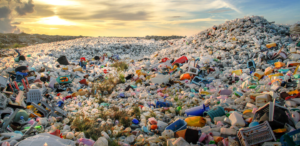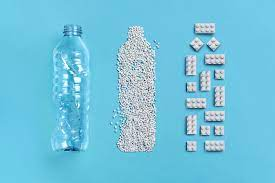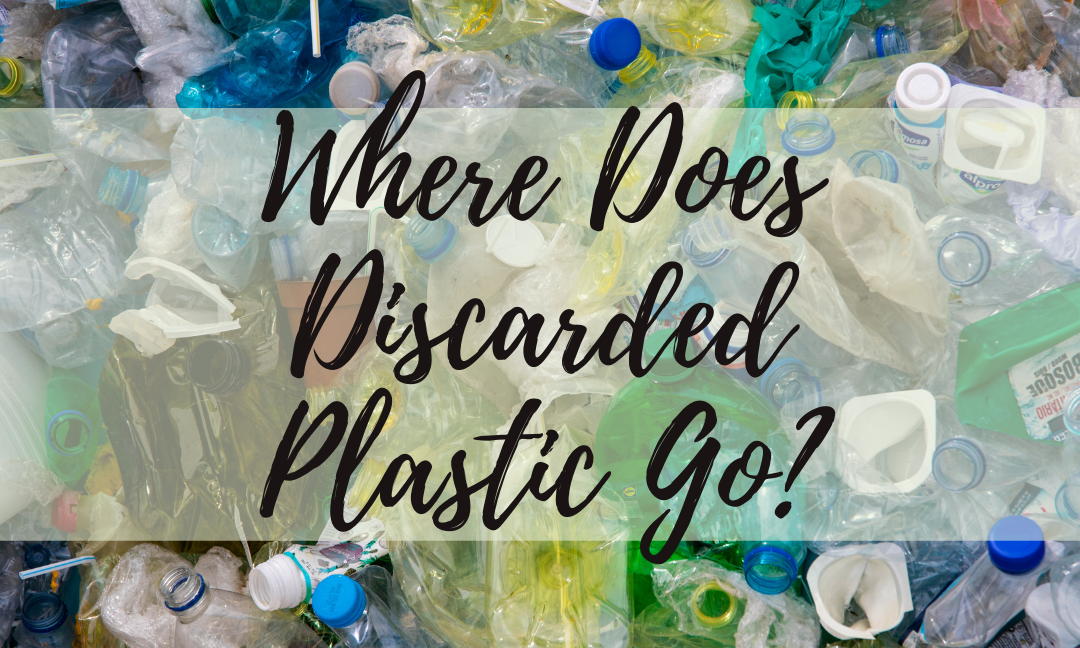Written by: Zoe Chen
It was 7pm, the sun was half set as a chilling fall wind flew from the dock. Pulling my jacket closer, my eyes searched for the origin of the breeze and landed on my crumpled forgotten plastic bottle. I hesitated, not wanting to head back down. It wasn’t too far away but I knew how fast the sun would set and the mosquitoes had begun to swarm. I only knew a bit about the effect of plastic, yet still guiltily thought: Do I really have to go back to get it? It wouldn’t be too bad if I just left one bottle right?
What really happens to the plastic we throw out? There is actually more than one answer, and in fact, they can be understood through the journey of three bottles.
 The first bottle is one like in my story. It ended up in a body of water, directly through the hands of people onshore and boats or indirectly through mismanaged waste and rain water. The waterways carry the bottle to the ocean, and from there it travels along with the currents to what is known as a “Great Pacific Garbage Patch.” There are five massive gyres in total. The garbage that is thrown there traps birds, and it is eaten by sea creatures who think the shiny plastic is food. It then goes up the food chain, from small fish, to tuna and eventually to us. Plastic isn’t biodegradable, meaning that the plastic can only break into smaller and smaller pieces (microplastics) that may drift through the ocean forever.
The first bottle is one like in my story. It ended up in a body of water, directly through the hands of people onshore and boats or indirectly through mismanaged waste and rain water. The waterways carry the bottle to the ocean, and from there it travels along with the currents to what is known as a “Great Pacific Garbage Patch.” There are five massive gyres in total. The garbage that is thrown there traps birds, and it is eaten by sea creatures who think the shiny plastic is food. It then goes up the food chain, from small fish, to tuna and eventually to us. Plastic isn’t biodegradable, meaning that the plastic can only break into smaller and smaller pieces (microplastics) that may drift through the ocean forever.
 The second suffers a different, yet similarly cruel, fate. It was thrown into the trash and is now either incinerated, which causes even more air pollution, or rotting in a landfill. As rain seeps through the soil of the landfill, the water absorbs the chemicals, which are very toxic. The water may then spread to lakes, poisoning wildlife and biosphere. The plastics in landfills may take an agonizing thousands of years to decompose.
The second suffers a different, yet similarly cruel, fate. It was thrown into the trash and is now either incinerated, which causes even more air pollution, or rotting in a landfill. As rain seeps through the soil of the landfill, the water absorbs the chemicals, which are very toxic. The water may then spread to lakes, poisoning wildlife and biosphere. The plastics in landfills may take an agonizing thousands of years to decompose.
 The adventure of the third is much more hopeful. The bottle is broken down into plastic pellets, which is what the plastic was originally made of. These pellets are then melted down into a liquid and are now ready to be remade into another bottle, or practically anything, as the cycle starts again.
The adventure of the third is much more hopeful. The bottle is broken down into plastic pellets, which is what the plastic was originally made of. These pellets are then melted down into a liquid and are now ready to be remade into another bottle, or practically anything, as the cycle starts again.
Having reached the end of our adventure, it is satisfying to say that I did go back for the water bottle that day. Although there isn’t a definite solution to the danger of plastics, there are small things that can be done by average consumers like you and me. A few examples are: use reusable products whenever possible or don’t use disposable plastic, reuse items, buy from sustainable or secondhand shops, recycle, and let your voice be heard. There are many foundations that can be supported, such as OCG (free search engine), Plastic Pollution Coalition (guide), and Union of Concerned Scientists (fights for change) These actions may seem small; however, every small action is a step towards helping our planet.
Sources:
https://www.trvst.world/waste-recycling/plastic-pollution/what-happens-to-our-plastic-waste/
https://blog.education.nationalgeographic.org/2018/05/17/what-happens-to-the-plastic-we-throw-away/
https://learn.eartheasy.com/articles/ocean-plastic-pollution-heres-how-you-can-help/
https://www.youtube.com/watch?v=_6xlNyWPpB8
Images:
https://www.verdict.co.uk/plastic-waste-in-ocean-treble/
https://www.sciencenews.org/article/chemistry-recycling-plastic-landfills-trash-materials

